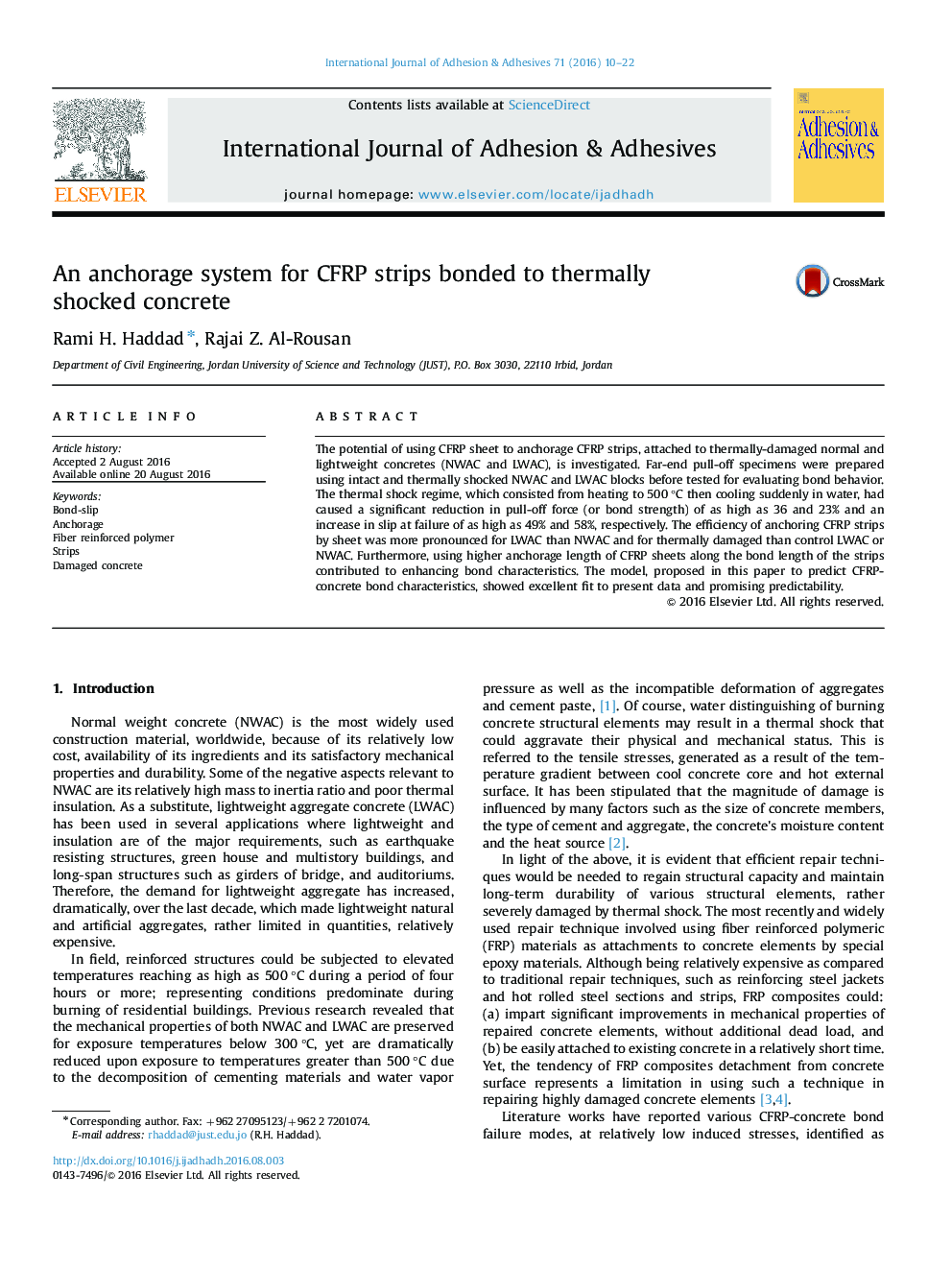| Article ID | Journal | Published Year | Pages | File Type |
|---|---|---|---|---|
| 7171030 | International Journal of Adhesion and Adhesives | 2016 | 13 Pages |
Abstract
The potential of using CFRP sheet to anchorage CFRP strips, attached to thermally-damaged normal and lightweight concretes (NWAC and LWAC), is investigated. Far-end pull-off specimens were prepared using intact and thermally shocked NWAC and LWAC blocks before tested for evaluating bond behavior. The thermal shock regime, which consisted from heating to 500 °C then cooling suddenly in water, had caused a significant reduction in pull-off force (or bond strength) of as high as 36 and 23% and an increase in slip at failure of as high as 49% and 58%, respectively. The efficiency of anchoring CFRP strips by sheet was more pronounced for LWAC than NWAC and for thermally damaged than control LWAC or NWAC. Furthermore, using higher anchorage length of CFRP sheets along the bond length of the strips contributed to enhancing bond characteristics. The model, proposed in this paper to predict CFRP-concrete bond characteristics, showed excellent fit to present data and promising predictability.
Related Topics
Physical Sciences and Engineering
Engineering
Mechanical Engineering
Authors
Rami H. Haddad, Rajai Z. Al-Rousan,
